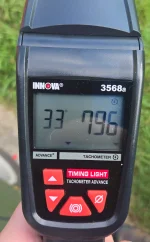LARRY70GS
Full Member
- Joined
- Jul 28, 2004
- Messages
- 4,092
- Reaction score
- 714
- Points
- 113
- Location
- Oakland Gardens, N.Y.
- Buick Ownership
- 70 GS455 Stg1
That's 32* maximum timing WITHOUT vacuum advance?Timing was checked yesterday after getting a new timing light and it's at 32*... feels great though! Going to redo the total timing when it isnt storming now that I know this new light actually works. But 32* though.... does that indicate something is bad timing mechanism wise? Also for the quadrajet is there a specific quadrajet model I should get or just anything for 70s Buick 350s?
You need the correct Quadrajet, or one built to the correct calibration for your Stock? 1971 Buick 350. That would be a 7041544.
This is the Quadrajet guy we use at V8buick.com,
Everyday Performance Rebuilt Rochester Quadrajet Carburetor Positraction Axle Store
From bone stock to street or sport, Everyday Performance can help you bring your cruiser or daily driven muscle to life
You CANNOT just buy any Quadrajet and expect it to run right. They were all calibrated for the engine they were for.







